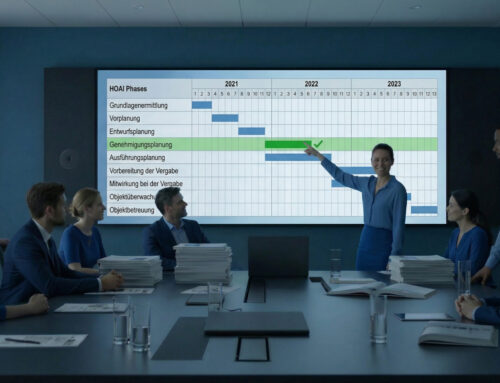Project Description
Fictitious project profile and development of a project idea
A municipality is planning to set up a CO₂-neutral local heating network to supply residential areas, public facilities and commercial premises. The aim is to reduce fossil heating systems in the long term and install reliable renewable energy systems. The project is part of the municipality’s local climate protection concept and is being implemented as a PPP or municipal minority shareholding with an experienced private partner.
The following project parameters are developed as a project idea:
Special features
Exavy creates a complete feasibility analysis based on structured data, plausibility checks and legal requirements.
The results provide the business case, ensure eligibility – and prepare well-founded decisions.






